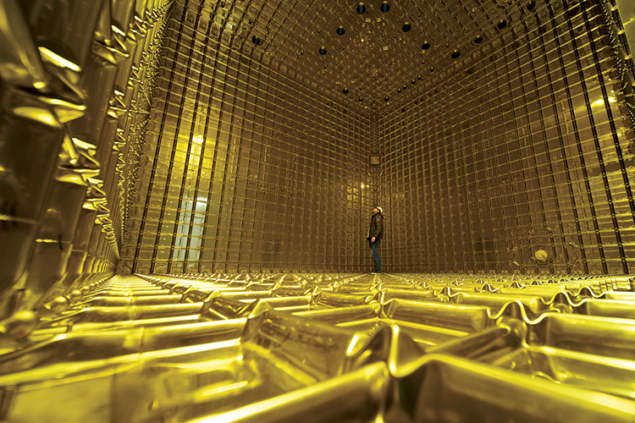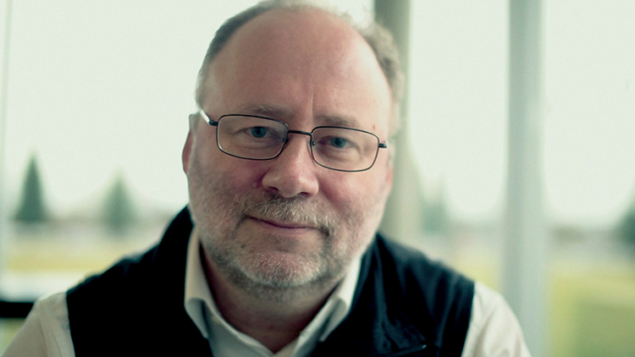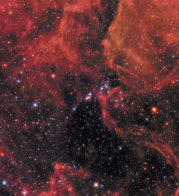20 years since the discovery of neutrino oscillations, a complete understanding is within our grasp.

On 3 July 1998, researchers working on the Super-Kamiokande experiment in Japan announced the first evidence for atmospheric-neutrino flavour oscillations. Since neutrinos can only oscillate among different flavours if at least some of them have a non-zero mass, the result proved that neutrinos are massive, albeit with very small mass values. This is not expected in the Standard Model.
Neutrino physics was already an active field, but the 1998 observation sent it into overdrive. The rich scientific programme and record attendance of the Neutrino 2018 conference in Heidelberg last month (see Neutrino physics shines bright in Heidelberg) is testament to our continued fascination with neutrinos. Many open questions remain: what generates the tiny masses of the known neutrinos, and what is their mass ordering? Are there more than the three known neutrino flavours, such as additional sterile or right-handed versions? Is there CP violation in the neutrino sector and, if so, how large is it? In addition, there are solar neutrinos, atmospheric neutrinos, cosmic/supernova neutrinos, relic neutrinos, geo-neutrinos, reactor neutrinos and accelerator-produced neutrinos – allowing for a plethora of experimental and theoretical activity.
Many of these questions are expected to be answered in the next decade thanks to vigorous experimental efforts. Concerning neutrino-flavour oscillations, new results are anticipated in the short term from the accelerator-based T2K and NOvA experiments in Japan and the US, respectively. These experiments probe the CP-violating phase in the neutrino-flavour mixing matrix and the ordering of the neutrino mass states; evidence for large CP violation could be established, in particular thanks to the planned ND280 near-detector upgrade of T2K.

The next generation of accelerator-based experiments is already under way. The Deep Underground Neutrino Experiment (DUNE) in South Dakota, US, which will use a neutrino beam sent from Fermilab, is taking shape and two large prototypes of the DUNE far detector are soon to be tested at CERN. In Japan, plans are shaping up for Hyper-Kamiokande, a large detector with a fiducial volume around 10 times larger than that of Super-Kamiokande, and this effort is complemented with other sensitivity improvements and a possible second detector in Korea for analysing a neutrino beam sent from J-PARC in Japan. These experiments, which are planned to come online in 2026, will allow precision neutrino-oscillation measurements and provide decisive statements on the neutrino mass hierarchy and CP-violating phase.
Important insights are also expected from reactor sources. In China, the JUNO experiment should start in 2021 and could settle the mass-hierarchy question and determine complementary oscillation parameters. Meanwhile, very-short-baseline reactor experiments – such as PROSPECT, STEREO, SoLid, NEOS and DANSS – are soon to join the hunt for sterile neutrinos. Together with detectors at the short-baseline neutrino beam at Fermilab (SBND, MicroBooNE and ICARUS), the next few years should see conclusive results on the existence of sterile neutrinos. In particular, the recently reported update on the intriguing excess seen by the MiniBooNE experiment will be scrutinised.
Together with the ever-increasing sensitivities achieved by double-beta-decay experiments, which test whether neutrinos have a Majorana mass term, the SHiP experiment is proposed to search for right-handed neutrinos, while KATRIN in Germany has just started its campaign to measure the mass of the electron antineutrino with sub-eV precision. The interplay with astronomy and cosmology, using detectors such as IceCUBE and KM3NeT, which survey atmospheric neutrinos, further underlines the vibrancy and breadth of modern neutrino physics. Also, the European Spallation Source, under construction in Sweden, is investigating the possibility of a precise neutrino-measurement programme.
Neutrino experiments are spread around the globe, but Europe is a strong player. A discussion forum on neutrino physics for the update of the European strategy for particle physics will be hosted by CERN on 22–24 October. Clearly, neutrino science promises many exciting results in the near future.





